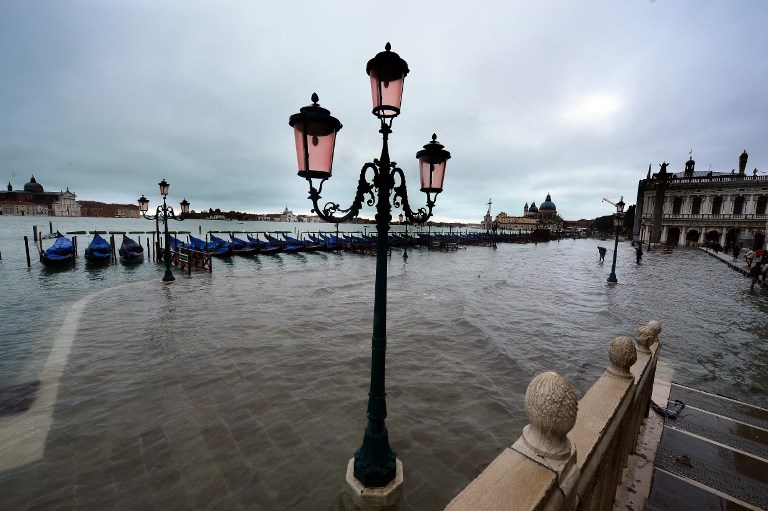
PARIS, France (AFP) — From Venice and the tower of Pisa to the medieval city of Rhodes, dozens of UNESCO World Heritage sites in the Mediterranean basin are deeply threatened by rising sea levels, researchers warned Tuesday.
All but two of 49 UN-recognised icons of human civilization rimming the Mediterranean Sea risk being damaged by the rising watermark, soil erosion, or both, with few options for protecting most of them, they reported in the scientific journal Nature Communications.
Venice and its lagoon, the Patriarchal Basilica of Aquileia, and Ferrera, City of the Renaissance, and its Po Delta, all hit the top of a risk scale devised for the study.
“These World Heritage Sites are located along the northern Adriatic Sea, where extreme sea levels are highest as high storm surges coincide with high sea level rise,” the authors explained.
In 2013, the UN’s climate science panel estimated that global oceans could go up by as much as 76 centimeters by century’s end.
But recent studies — taking into account shrinking ice sheets, now the top contributor to sea level rise — suggest those earlier projections were far too conservative. The Intergovernmental Panel on Climate Change (IPCC) will publish new estimates in September 2019.
Even under the most optimistic scenarios for reducing greenhouse gases, sea levels will continue to rise well into or across the 22nd century.
The sites most at risk from coastal erosion include Tyre in Lebanon, the Archaeological Ensemble of Tarraco in Spain, and Ephesus in Turkey.
“Heritage sites face many challenges to adapt to the effects of sea level rise, as it changes the value and ‘spirit of place’ for each site,” said co-author Sally Brown, a senior researcher at the University of Southampton.
Only a couple of the sites — including the Early Christian Monuments of Ravenna and the Cathedral of St. James in Sibenik — could be relocated, but doing so would compromise what the UNESCO calls their “outstanding universal value,” the study found.
Researchers led by Lena Reimann of Kiel University looked at four climate change scenarios based on how quickly and deeply humanity reduces carbon pollution.
They ranged from one that would see global warming capped at two degrees Celsius (3.6 degrees Fahrenheit) above preindustrial levels, to a “business-as-usual” trajectory in which greenhouse gas emissions continue unabated, resulting in a temperature increase of 3C to 4C by 2100.
“Sea level rise may become a larger threat to World Heritage Sites than a present-day once-a-century storm surge,” the study said.
“Present day 100-year events in the Mediterranean may occur much more frequently, up to several times per year, by 2100.”
© Agence France-Presse







